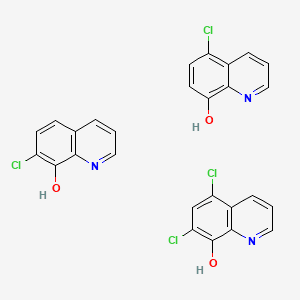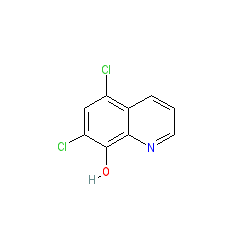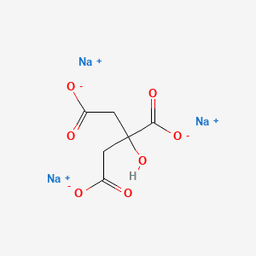

Halquinol consists of a mixture of chlorinated derivatives of quinoline-8-ol, mainly including 5,7-dichloro-8-hydroxyquinoline, 5-chloro-8-hydroxyquinoline, and 7-chloro-8-hydroxyquinoline. Halquinol is commonly a livestock broad-spectrum antimicrobial agent in animal feed to promote growth, enhance feed efficiency, and prevent microbial infections in poultry and livestock. Halquinol's Effectiveness against bacteria, fungi, and protozoa is the reason suppliers have end-use preferences. Also, Halquinol is cost-effective and improves animal productivity while reducing disease outbreaks. Halquinol is effective against three microorganisms, including bacteria, fungi, and protozoa. This chlorinated hydroxyquinoline compound exhibits antimicrobial activity against both gram-positive and gram-negative bacteria, as well as certain protozoa.



Halquinol consists of a mixture of chlorinated derivatives of quinoline-8-ol, mainly including 5,7-dichloro-8-hydroxyquinoline, 5-chloro-8-hydroxyquinoline, and 7-chloro-8-hydroxyquinoline. Halquinol is commonly a livestock broad-spectrum antimicrobial agent in animal feed to promote growth, enhance feed efficiency, and prevent microbial infections in poultry and livestock. Halquinol's Effectiveness against bacteria, fungi, and protozoa is the reason suppliers have end-use preferences. Also, Halquinol is cost-effective and improves animal productivity while reducing disease outbreaks. Halquinol is effective against three microorganisms, including bacteria, fungi, and protozoa. This chlorinated hydroxyquinoline compound exhibits antimicrobial activity against both gram-positive and gram-negative bacteria, as well as certain protozoa.

.3d8f8f41.svg)
Food & Nutrition
.3556d45a.svg)

Feed Additives, Animal Feed & Nutrition


Antimicrobial Agent

Chemical Properties & Specifications
H315: Causes skin irritation H319: Causes serious eye irritation H335: May cause respiratory irritation
P261: Avoid breathing dust. P280: Wear protective gloves, clothing, and eye protection. P302 + P352: IF ON SKIN: Wash with soap and water.
Inhalation: Move to fresh air. Seek medical attention if symptoms persist. Skin Contact: Wash thoroughly with soap and water. Eye Contact: Rinse with water for 15 minutes. Seek medical attention if irritation persists. Ingestion: Do not induce vomiting. Seek immediate medical attention
Acute Toxicity, Oral (Category 4) Skin Irritation (Category 2) Eye Irritation (Category 2A)
*Used as an antimicrobial growth promoter in poultry, swine, and aquaculture feeds. *Prevents and controls bacterial infections, such as salmonella and E. coli, in livestock.
*Incorporated into animal feeds to maintain gut health and reduce gastrointestinal infections. *Enhances feed efficiency and promotes better weight gain in livestock.
Commonly used to improve productivity in poultry by reducing the risk of infections and improving overall flock health.
Helps control bacterial diseases in aquatic species, contributing to better growth and survival rates.
Reduces the need for antibiotic treatments by promoting a healthy microbiome in animals' digestive systems
Effective against bacterial infections such as colibacillosis and protozoan diseases.
*Broad-Spectrum Activity: Effective against bacteria, fungi, and protozoa. *Cost-Effective: Improves animal productivity and reduces disease outbreaks. *Stable Formulation: Suitable for long-term storage
Store at 15–25°C (59–77°F).
Keep in a cool, dry place away from light and moisture.
Use airtight containers to prevent contamination and degradation.
Available in HDPE bags and fiber drums.
2 years sealed, cool, dry.

CAS No. : 57-55-6
Category : Food Ingredients
Sub-Category : Other Functional Additives
Description: Propylene glycol is a synthetic liquid substance that absorbs water. Propylene glycol is also used t...

CAS No. : 93165-26-1
Category : Nutraceutical Ingredients
Sub-Category : Herbal Extracts

CAS No. : 84696-21-9
Category : Nutraceutical Ingredients
Sub-Category : Herbal Extracts

CAS No. : 68-04-2
Category : Food Ingredients
Sub-Category : Acidulants & Acidity Regulators
Description: Sodium citrate is the trisodium salt of citric acid. It has a role as a flavouring agent and an anti...

CAS No. : 77-92-9
Category : Food Ingredients
Sub-Category : Flavor Enhancers
Description: Citric Acid is a naturally occurring tricarboxylic acid derived from citrus fruits, available in bot...